http://www.msnbc.msn.com/id/38696014...ience-science/
http://news.cnet.com/8301-17938_105-20013217-1.html
Following in the footsteps of Howard Carter and Abbot and Costello, a specialized robot will penetrate deeper into the Great Pyramid of Giza than ever before. The robot, part of a years long exploration called the Djedi Project, will explore a shaft inaccessible to a previous robot, unlocking a room that has remain sealed for 4,500 years.
The robot explorer, built by researchers at the Leeds University, England, in collaboration with French aviation company Dessault and British robotics company Scoutek, will incorporate a small fiber optic camera for looking around corners, an ultrasonic probe for testing the quality of the rock and a releasable mini-robot that can fit through spaces as small as 0.7 inches in diameter. Additionally, the robot uses special nylon and carbon fiber wheels that won't deface the pyramid's sensitive rock.
"All the robots were designed from scratch to do as little damage to the shafts as possible," Shaun Whitehead, Systems engineer and mission manager, told TechNewsDaily. "The previous robots both used tracks that scrubbed away at the floor and ceiling as they moved. We use soft brace pads to grip the walls, like an inchworm or the technique that rock climbers use for ascending 'chimneys.' The wheels don't need to grip, they need to slip as much as possible.'"
Whitehead designed the robot so that the team could easily swap out different components, depending on what they find down the shaft. To create the different components, Whitehead and his team used 3-D software provided by Dessault, and then "printed" out the parts on a 3-D fabricator at Leeds University.
The robot will travel down a shaft located in the tomb of the Queen. Unlike the King's tomb, where shafts lead to the outside of the Great Pyramid so his soul could escape into the afterlife, the shafts leading from the Queen's tomb borrow deeper into the pyramid.
This is the third time a robot has tried to find the end of the Queen's tomb shaft. The first expedition found that a giant stone door blocked the tunnel, and the second robot discovered another door behind that one. With it's microbot and drill, the Leeds University researchers designed this new robot specifically to breach those obstacles.
The Djedi Team Robot
http://www.drhawass.com/blog/djedi-team-robot
.I selected the Djedi team during a competition that I coordinated to pick the best possible robot to explore the shafts in the Great Pyramid. I decided on a team sponsored by Leeds University and supported by Dassault Systemes in France.
The Mystery of the Hidden Doors Inside the Great Pyramid
http://www.drhawass.com/events/myste...reat-pyramid-0
The Secret Doors Inside the Great PyramidThe Great Pyramid of Khufu has fascinated people for millennia. It is the only one of the seven wonders of the ancient world still standing today, and its monumental size and the precision of its design astound thousands of visitors each day. I feel very privileged to have had the opportunity over the course of my career to come to know the pyramid in great depth, and to have discovered one of its greatest secrets - the hidden doors inside the shafts that lead from the so-called “Queen’s Chamber.”
Aerial view of the Giza Plateau. (Photo: Kenneth Garrett)
The story of the discovery of the hidden doors began in 1992, when I made the decision to close the Great Pyramid to visitors in order to begin a project to reduce the humidity inside and to correct the damage that was occurring from the accumulation of salt. Each visitor who enters the pyramid leaves behind about 20 grams of moisture from their breath and sweat. When it evaporates, this moisture leaves behind salt deposits, which erode the stone over time. In 1992, we found that the humidity inside the pyramid was hovering around 85%, and salt deposits covered the walls of the Grand Gallery. We cleaned the salt from the walls of the Grand Galley, but we knew that to save the pyramid from irreversible damage, we also had to find a way to reduce the humidity inside.
I contacted Dr. Rainer Stadelmann of the German Archaeological Institute in Cairo, and he arranged for an engineer named Rudolf Gantenbrink to come to Egypt and assist the Supreme Council of Antiquities in installing a ventilation and humidity control system in the pyramid. The first step was to clear the two shafts, each about 20 cm wide and 14 cm high, that lead from the King’s Chamber to the exterior of the monument. We then installed ventilation equipment in the shafts. This project was very successful, allowing us to greatly reduce and stabilize the humidity inside the pyramid.
Peering into one of the mysterious shafts. (Photo: James Kegley)
The shafts themselves are a great mystery. In addition to the two that extend from the King’s Chamber, there are two in the Queen’s chamber as well - one in the northern wall, and one opposite it in the southern wall. No one knows why these shafts were included in the pyramid’s design. An important part of the work in the shafts in the King’s Chamber was sending a small robot inside with a camera attached, to inspect them along their entire lengths. The robot was named “Upuaut,” a different spelling of the name of the god Wepwawet, the “opener of ways.” We learned so much from this exercise about how the King’s Chamber shafts had been incorporated into the construction of the pyramid that we decided to use a robot to inspect the shafts in the Queen’s Chamber as well. Although we knew that the shafts in the King’s Chamber led to the exterior of the pyramid, no one had ever found the outlets for the shafts in the Queen’s chamber. We thought that we might finally be able to solve this puzzle, and perhaps even shed some light on why they were included in the pyramid’s design.
The shafts in the Queen’s Chamber were first discovered in 1872 by a British engineer named Waynman Dixon. The ancient Egyptians had blocked them with stones, making it appear that the walls of the chamber were completely solid. Dixon, however, decided to probe all the joints in the masonry of the Queen’s Chamber with a wire to see if anything might be hidden behind them. When he discovered a hollow in the southern wall, he chiseled through to reveal the shaft. He realized that there was probably a corresponding shaft in the northern wall, and was indeed able to locate one. In the southern shaft, Dixon and his associate James Grant found a small, bronze hook. The northern shaft yielded a granite ball and a piece of cedar-like wood. These objects became known as the Dixon Relics. Both sets of artifacts lay in the rubble at the bottom of the sloping shafts. A report on the discovery of the relics was published in the journal “Nature” on December 26, 1872, including a drawing of the items. In 1993 a search led to the discovery of the ball and hook in the British Museum, where they remain today. The piece of cedar-like wood was missing until 2001, when it was traced to the Marischal Museum in Aberdeen, Scotland.
In 1992, we used Gantenbrink’s robot to take the first look inside the shafts in the Queen’s Chamber. After the solution of a number of technical difficulties, the robot was able to climb about 60 meters into the southern Queen’s Chamber shaft, where it encountered a barricade - a limestone “door” with two copper handles! No one had expected to see such a thing. After making this remarkable find, we sent the robot into the northern shaft. At 18 meters, the robot encountered a bend of about 45 degrees to the left, and was unable to go any further. Gantenbrink returned to Germany, and we were forced to wait until we could find another team to bring in a robot equipped to navigate this bend.
The first of door in the northern Queen's Chamber shaft. (Photo: National Geographic)
The National Geographic Society agreed to collaborate with the SCA on developing a new robot to explore the shafts in the Great Pyramid. They brought in a firm from Boston, USA, called iRobot to design the machine. Finally, in 2002, we were able to send this robot into the southern shaft and drill a small hole in the limestone blocking. Everyone was amazed when a small camera inserted into the hole revealed a second stone “door” blocking the passage about 20 centimeters beyond the first one! The second door is unlike the first. It looks as if it is screening or covering something, and there are cracks all over its surface. I was so happy to see it, but I couldn’t understand why we had found another door.
The world watched this discovery unfold live on Fox TV, in a special broadcast. One of the main goals of the documentary was to show the public the evidence left behind by the people who built the pyramids. I talked about the Tombs of the Pyramid Builders, and showed graffiti which names the work gangs that built the pyramids. I even entered the tunnels below the Step Pyramid of Djoser at Saqqara for the first time - I believe that I was the only living archaeologist at that time to have done this, and that it was the first time in history that a television crew had seen the more than 3 miles of winding tunnels below the Step Pyramid.
The second door in the southern Queen's Chamber shaft. (Photo: National Geographic)
The television program aired on September 17. Before the show, I went to Hong Kong and Singapore to publicize it, and my friend and colleague Mark Lehner went to Australia, India, and Spain right after the show to discuss the results of our research. Before the show, no one - not even Mark and I - knew what we would find behind the door. One day before the show, we had found out by ultrasound that the door in the southern shaft of the Great Pyramid was about six centimeters thick, which implied that there was something behind it, but no one knew what it might be. We and my National Geographic colleagues wanted to be honest. We prepared ourselves mentally for whatever find (or lack thereof) that we might make. The show was well received by the public all over the world, and was rated “great” by Fox Television in the United States. Half a billion people in China watched the show. Newspapers all over the world covered it on a level that had never before been seen for a television program.
A few days after the Fox broadcast that revealed the second door in the southern shaft, the robot was also able to explore the northern Queen’s Chamber shaft, navigating the sharp bend to the left. It discovered two further, smaller bends to the right at about 23 and 25 meters. We realized that the reason for all of the turns in the northern shaft was that if it had been made straight, it would have crossed paths with the Grand Gallery. The builders had to add the bends to avoid this. Finally, at a distance of about 65 meters from the Queen’s Chamber, the robot found a door very similar to the first one in the southern shaft! The copper handles in the first doors in both the north and south shafts are similar to those on the canopic box of Tutankhamun in the Egyptian Museum Cairo, which were used to pull the box. The doors themselves are made of fine white limestone from Tura, and it seems as thought the handles might have been used to pull them into place.
National Geographic video still of the robot exploring the northern Queen's Chamber shaft. (Photo: National Geographic)
No one is sure why the builders of the Great Pyramid incorporated the four shafts into the design of Khufu’s monument. Since the shafts in the King’s Chamber open outside of the pyramid, I believe that Khufu’s soul was meant to travel through them. The southern King’s Chamber shaft was intended for Khufu to use as the sun god Ra. It opens exactly between the two boat pits to the south of the Pyramid. Khufu would take the two boats and use them as solar boats for his journey as the sun god through the daytime and nighttime skies – one for the day trip, one for the evening trip. The northern shaft was made for the soul of Khufu as Horus to travel to the eternal circumpolar stars. As for the Queen’s Chamber shafts, I cannot imagine that they had a religious function, as they do not seem to open to the outside of the pyramid - their outlets, if such exist, have never been found in spite of our careful searching. The presence of the doors inside them raises many questions. One idea is that the doors are a challenge that the king must face before he can travel into the afterlife. It is written in the Pyramid Texts that the king will face bolted doors before beginning his journey - perhaps this reference explains the doors’ copper handles. Yet if this is true, why is Khufu’s pyramid the only one with the doors? Also, why are there no doors in the shafts in the King’s Chamber? Logically, we would expect to find them in the shafts that extend from the room where the king’s body was buried. Could it be possible that these doors are evidence that Khufu’s burial chamber might still be hidden somewhere inside his pyramid? The mystery of the doors is one of the most exciting puzzles in Egyptology today.
Finding out what lies beyond the second door in the southern shaft poses great technical challenges - to do this, we will need a robot that can breach the 20 centimeter space behind the first door, and then drill through the second door without causing unnecessary damage to it. I am happy to announce that 2009-2010 will be the year when we finally move forward with this adventure. We have spent many years searching for a team that could help us to develop the equipment needed to carry out this project, but we have finally selected a group that we feel is perfectly qualified to do so. The team is affiliated with Leeds University in the UK. In July of this year, they will bring a new robot to Egypt for final testing, and we expect to be able to go ahead with our work to answer the question of why the mysterious shafts were incorporated into the design of the pyramid, and what lies behind the secret doors!
http://guardians.net/hawass/articles...at_pyramid.htm
The Secret Doors Inside the Great Pyramid
Zahi HawassThe Great Pyramid of Khufu has always fascinated people because it is the only ancient wonder of the world that exists today. It is also possible people are fascinated because Khufu’s pyramid, especially the interior, is very complex. The modern entrance to the pyramid was created in the Ninth Century A.D. by el-Mamoun son of Haroun el-Rhasied. The true entrance is above this one. This passage goes down through the pyramid, and then connects to another corridor that ascends to the King’s and Queen’s Chambers. The original passage continues downwards into an unfinished chamber directly under the pyramid. Discussion about the purpose of these chambers and the complexity of the pyramid is varied and ongoing. Serious scientific work on the Great Pyramid began in 1993, when we closed the pyramid for the first time for a full year. It was part of a plan to institute a rotational system at Giza, closing one pyramid a year while leaving the other two open, in order to balance conservation with tourism. During conservation it was found that the interior of the Great Pyramid had a humidity of 85 percent. Most of this was due to tourism, as each person inside the pyramid deposits approximately 20 grams of water through breathing. This water then becomes salt, which in 1993 covered the surface of the Grand Gallery; also, many cracks could be seen inside.
The pyramid needed to be cleaned, and a system to permanently lower humidity had to be developed. One idea was to clean the airshafts in the third chamber, the so-called King’s Chamber, and put machines inside of them to create a ventilation system. I talked to Rainer Stadelmann, the director of the German Archaeological Institute in Cairo at that time, who in turn arranged for a robotic expert, Rudolf Gantenbrink, to come and do work through the Institute. Gantenbrink designed a robot called Webwawat to investigate the airshafts in the third chamber. The robot was also sent inside the shafts in the so-called Queen’s Chamber, and made an intriguing find in the room’s two shafts. In the south shaft, Webwawat was stopped at 208 feet in front of a door or small stone with two copper handles. The left handle had lost a piece sometime in antiquity, which was lying about six feet in front of the door/stone. The northern shaft in the so-called Queen’s Chamber was blocked after approximately 27 feet. Gantenbrink published his information on the web at www.cheops.org. Gantenbrink’s work was the most in-depth work to be conducted on the shafts of the so-called Queen’s Chamber. The history of the investigation of these shafts begins in September 1872, when the British engineer Waynman Dixon discovered the openings of the north and south shafts of the Queen’s Chamber. Dixon pushed a wire through the joints of the masonry of the south wall, and realized there was a hollow space behind. He then chiseled through the wall to reveal the shaft. He looked for a shaft in the equivalent area of the north wall and found one. When he lit a candle and placed it in the southern shaft, there was a slight draft.In the south shaft, Dixon and his associate James Grant found a small bronze hook. The north shaft yielded a granite ball and a portion of cedar-like wood. They became known as the Dixon Relics. Both sets of artifacts lay amongst rubble at the bottom of the sloping shaft. The relics were taken to England, recorded by astronomer Royal Scotland, and returned to Dixon – after which they disappeared. Report of the discovery of the relics was made in “Nature” December 26, 1872, including a drawing of the items.
In 1993 a search led to the discovery of the ball and hook in the British Museum, where they still are today. The piece of cedar-like wood remained missing until 2001, when it was traced at the Marischal Museum, Aberdeen. Although they are sure it is in their collection, they haven’t yet located it as they are in the process of moving. Gantenbrink’s exploration of the shaft in 1993 revealed a long piece of wood lying in the sloping portion of the shaft. Its cross-sectional area and general appearance were similar to the piece of wood found by Dixon. It is possible that the short piece of wood reported by Dixon simply broke from the larger piece. A modern metal pole found alongside the piece of wood supports this theory. No mention of the pole is made in Dixon’s reports, but it is now thought to have been lost when Dixon and his colleagues were “treasure-hunting” in the shaft. They probably broke the small piece of wood from the longer piece while they were manipulating the metal pole, but did not report it.
Some suggest that carbon dating the wood would allow accurate dating of the Pyramid because wood must have been left in the shaft when the Pyramid was constructed (given that the shaft was sealed) but I contend that this is not absolute. Wood may been placed in the shaft after construction via the shaft’s exit, if one exists.
Egyptologists have multiple explanations for these shafts. Some believe that they were used for ventilation, but this cannot be true as they do not open up to the outside. Others believe that they have an astronomical function; the southern shaft connected to the star Sirius, and the northern shaft linked to Minoris, Ursa, and Beta. Stadelmann believes that these shafts are not for ventilation, but are tunnels through which the king’s soul will rise to the stars that never darken.
I believe that the shafts from the so-called Queen’s Chamber likely have no function, as they were blocked from the inside. If they had a religious function, they should have been left open, as were the shafts of the third burial chamber (the King’s Chamber). Since these open outside of the pyramid, I believe that Khufu’s soul was meant to travel through them. The south shaft was intended for Khufu to use as the sun god Ra. The south shaft opens exactly between the two boat pits to the south of the Pyramid. Khufu would take the two boats and use them as solar boats – one for the day trip, one for the evening trip. The north shaft was made for the soul of Khufu as Horus to travel to the stars in order to emerge from them as the sun god.
In order to understand the purpose of the shafts of the so-called Queen’s Chamber, more work had to be done. The German Institute in Cairo had the concession to the Great Pyramid, and I could see that they were not interested in completing the work on the shafts. It was impossible to sign the concession to Gantenbrink as he is an individual, and the antiquities law in Egypt only allows for concessions to be granted to institutions. So I decided that the Supreme Council of Antiquities (SCA) would do the work. I asked Tim Kelly of National Geographic Television to design a robot to probe the shafts, and I would head the expedition. I believed there was nothing behind this door at all but that it was very important for scholars and the public alike to know that there is nothing behind it. Archaeologists would know that even empty space is important.
National Geographic designed a robot and called it the Pyramid Rover, and the Permanent Committee of the SCA acknowledged the project as an Egyptian endeavor. The date for the television program was set for September 17. Before the show, I went to Hong Kong and Singapore to publicize it, and Mark Lehner went to Australia, India, and Spain right after the show. I, as well as my colleagues at National Geographic, wanted to be sure that we were honest and people were prepared for whatever find (or lack thereof) that we might make.
One of the main goals of the documentary was to show the public the evidence of the people who built the pyramids. I was to talk about tombs, show graffiti which names the work gangs that built the pyramids, and even go inside of the Step Pyramid of Djoser for the first time. The substructure of this pyramid consists of tunnels and passages and rooms with a total length of about three and a half miles. I believe that the interior was never shown in a film before, and that no living Egyptologist has entered it.
One day before the show, we found out by Altrosonic that the door in the southern shaft of the Great Pyramid is about six centimeters thick, which implied that there was something behind that door. We decided to drill a three-millimeter diameter hole in the door so we could send a camera behind it. In the last minute of the show, the camera was sent in, and I saw the second door 21 cm. behind the first door. It is not similar to the first in that it looks as if it is screening or covering something. There were also cracks all over the surface. I was so happy to see it, but I couldn’t understand why we had another door.
The show was well received all over the world by the public, and was rated “great” by Fox Television in the United States. Half a billion people in China watched the show. Newspapers all over the world covered it to a level that was never done for any television program before.
A few days after the show, we sent the robot into the northern shaft. Gantenbrink and Dixon both were only able to probe 27 feet because of a turn in the shaft. After further investigation, it seems that the turn was made in order to avoid intersecting the Grand Gallery, implying that the shafts were cut after the Grand Gallery’s construction. The Pyramid Rover went through this shaft and was stopped after a total of 208 feet, in front of another door with copper handles. It is in the exact same location as the first door in the southern shaft and is very similar to it. Behind this door there is likely another door exactly .70 feet away from the first, exactly like the south shaft. The copper handles in the first doors in both the north and south shafts are similar to those on the canopic jar box of Tutankhamun at the Cairo Museum. The two copper handles were used for ropes to pull the canopic jars. The doors themselves are made of fine white limestone from Tura, and it seems as if their handles allowed them to be pulled inside the shafts, to the same location.
The presence of these doors in the Great Pyramid creates many questions. One idea is that the doors are a challenge that the king must face before his travel into the afterlife. It is written in the Pyramid texts that the king will face bolts before he travels; perhaps this is a reference to the door’s copper handles. Yet if this is true, why is Khufu’s pyramid the only one with the doors? Also, why do they not exist in the shafts of the third chamber? Logically, they should be where the king’s body is buried. It is possible that these doors are evidence that Khufu’s burial chamber might be hidden somewhere inside of his pyramid.
The probe attached to the robot gets ready to send its camera through a hole carefully drilled in the southern shaft "door".
However, these doors made the story about the Great Pyramid of Khufu more exciting, especially because the second door in the south shaft does not look like the first one and also the door in the north shaft is located in the same place as the one in the south shaft and appears similar to it with its two copper handles.
After the robot sent its probe through the handled slab in the southern shaft, another, more roughly hewn limestone slab, containing visible cracks was found.
We are planning to clean the south shaft from outside to learn if it does open to the outside. If it does, then it is possible that it was a symbolic door for the king to use in crossing to the Netherworld. If it is sealed, we have to return to the Westcar Papyri and read how Khufu was looking for the documents of the god Thoth to help him with the design of his pyramid. Only further research into the shafts can reveal their function, solving one of the many mysteries of the Great Pyramid.
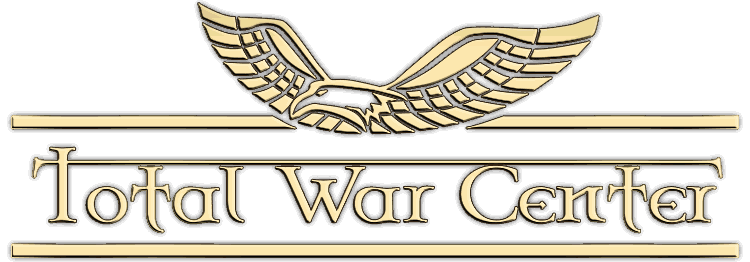












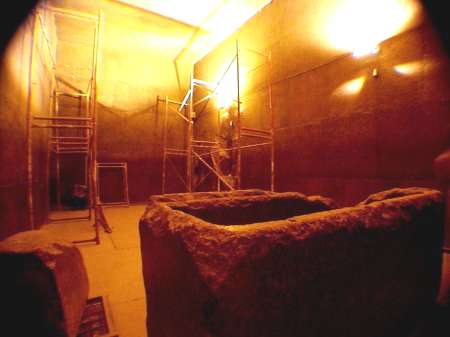
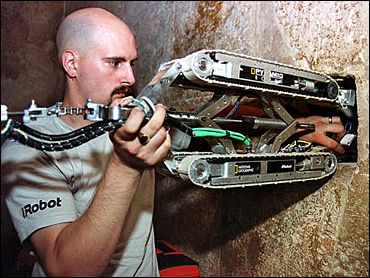
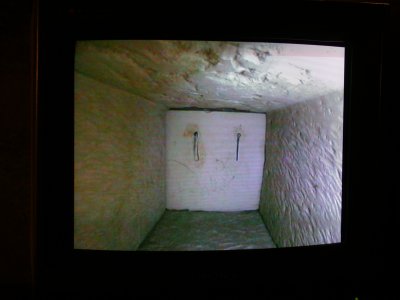
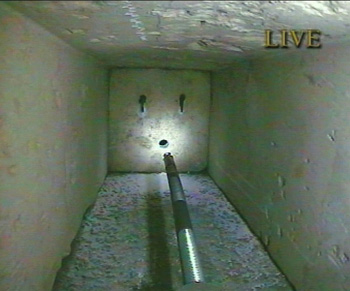
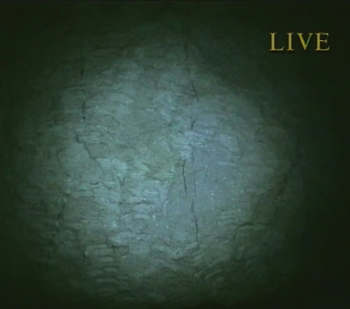
 Pillaging and Plundering since 2006
Pillaging and Plundering since 2006

 Reply With Quote
Reply With Quote















